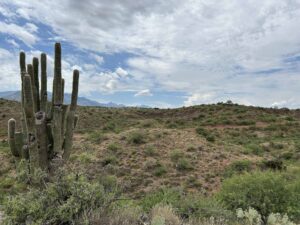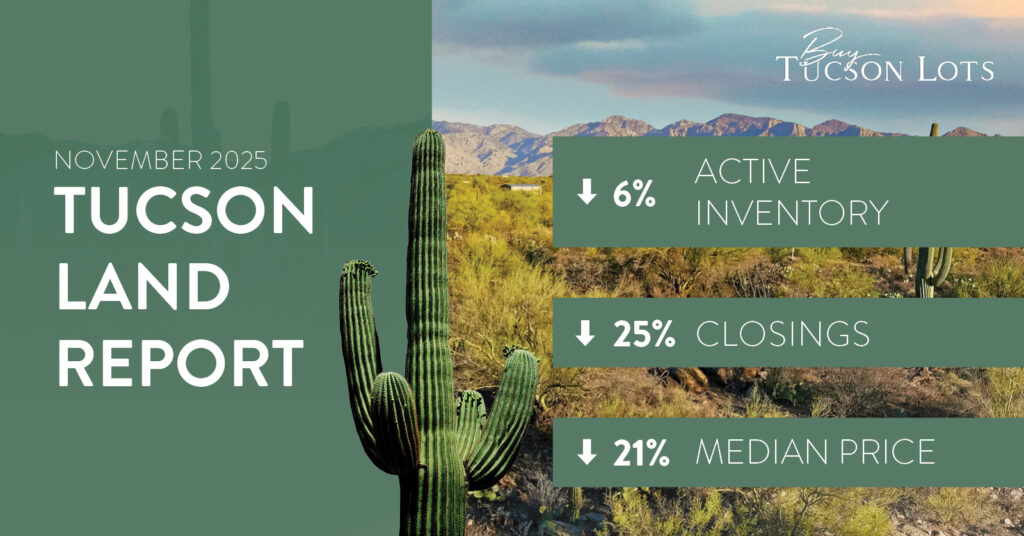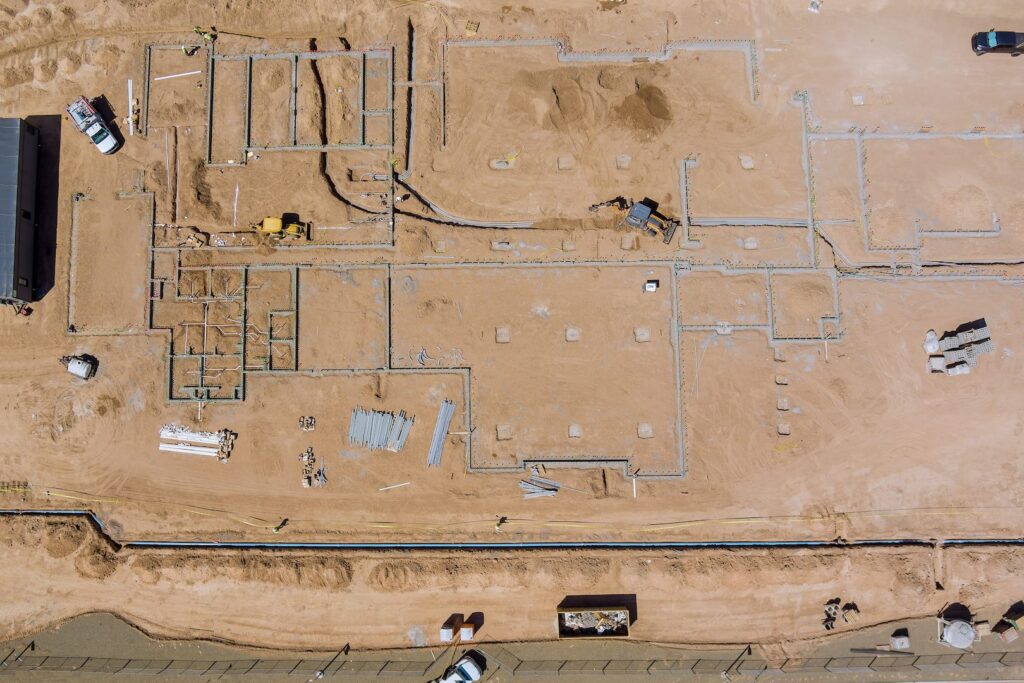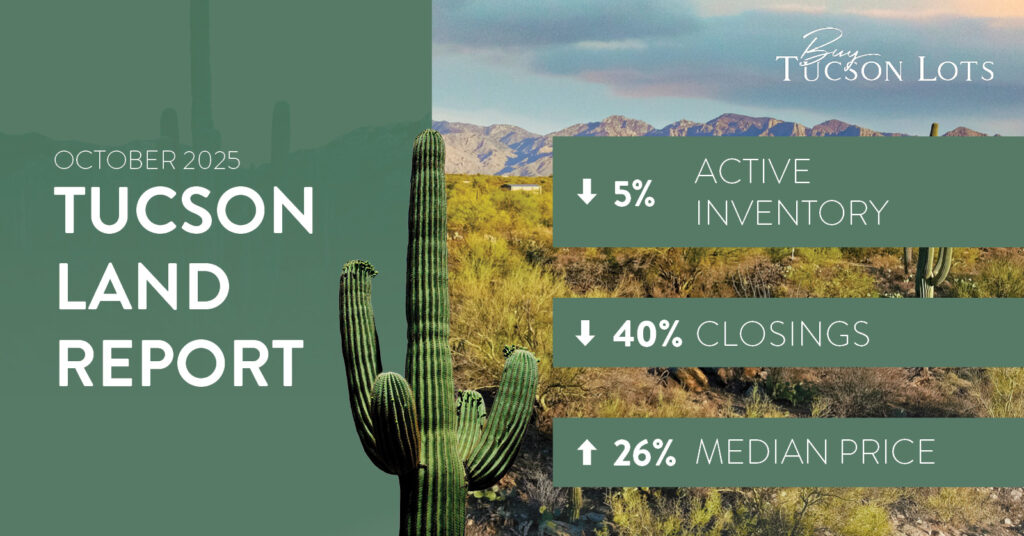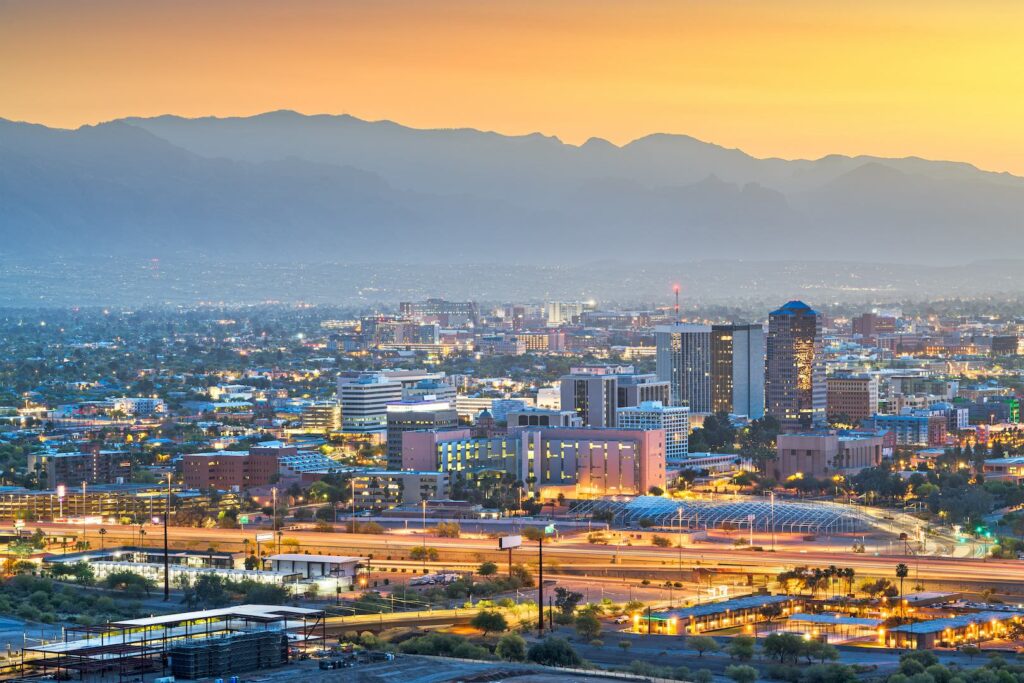Tucson lot buyers can get hung up on the thought of a wash, or arroyo, on a property they’d like to purchase, but when you start the process of buying vacant land with your eyes open, you’ll learn how Pima County regulates land development and how they determine the effects of a wash on a property’s usability.
First, there is an important distinction between regulated and non-regulated washes. Regulated washes must carry a minimum of 100 cubic feet of water (cfs) per second.
Any wash with less flow is labeled non-regulated and is considered minimally invasive to the property. A typical non-regulated wash requires a minimum 25 ft setback. This is an easy guideline to meet when building on an acre lot, for instance.
As washes increase in size, the length of setbacks also increase. The requisite distances between the wash and where you can build your home are calculated by Pima County Flood Control hydrologists and engineers who study the washes’ flow rates.
When regulated washes have flow of 100 cfs or more, setbacks are calculated to 50 and 100 ft. Major washes that carry larger amounts of water can have 250 and 500 ft setbacks and we pay closer attention to properties with these regulations.
When there is a larger wash close to your property and the setback distance is significant, I recommend that clients seek consultation with a hydrologist to conduct an erosion hazard setback reduction study at a cost of $1,000-$3,000. A study will determine the specific features of the wash, including the size, width, clarity and definition of banks, rocky protection, and overall geography of the wash.
For instance, if the vacant lot has a major wash located 40-50 ft below your building site but has a solid, defined wash bank consisting of rocks and boulders, a closer look may provide evidence to decrease the amount of setback required.
Often, the county will determine the setback only by the amount of water flow without investigating the lot’s topography, so a study can produce useful results in your favor without compromising safety.
Desert riparian areas should also be taken into account when buying Tucson lots. Because of the water-rich soil in riparian areas, certain types of plants propagate there, adding necessary biodiversity to the desert. Pima County identifies areas where useful vegetation has developed, rates them with degrees of importance, and imposes different regulation in these areas.
According to these rules, buyers and developers may disturb up to 12,500 sq ft of riparian area without mitigation. In most cases, this is plenty of space to build a house and lay a driveway on the property. Typically, the 12,500 sq ft rule only affects large developments or properties and when these requests are made, Pima County steers people away from riparian areas.
In my next post, I’ll be talking about the best reason to have a wash on your property: flora and fauna! To subscribe to my blog for more updates about vacant land in Tucson, click here. To contact me directly, send me a message here. I look forward to talking lots with you!



